1⁄1
Thursday, February 28, 2013 - 08:30 AM UTC
TANKOGRAD has a bumper release schedule for us in March with eight new releases to get us dipping our hands in our pockets. The eight new titles range from titles covering World War Two to the current day.
TANKOGRAD in March has some great additions to their range of books covering German Armoured Formations in the OZAK 1943-45 through to Vehicles of the Modern Swedish Army. Here is the information provided by TANKOGRAD on their website on these releases.
Challenger 1
The Last Cold War Era Tank of Britain’s Armoured Corps
The FV4030/4 Challenger 1 MBT was the last vehicle of its type developed and fielded by the British Army during the Cold War era. Procured as a stop-gap measure in the early 1980s to replace part of the ageing fleet of FV4201 Chieftain MBTs, the new vehicle was intended to battle Warsaw Pact armour on the plains of northern Germany in the event of the Cold War ever turning hot. This publication tells in great detail the development history, describes the technology, Challenger 1 variants Mk 1, 2 and 3, the CRARRV, the Training Tank, the Al Hussein as well as the MBT in action during IFOR, SFOR, KFOR and in Operation Granby.
Vehicles of the Modern Swedish Army
The motor pool of the Swedish Army has changed drastically in the past decades. While in the Cold War domestic products such as the S-Tank were dominant, this changed in the 1990s when large quantities of ex-East German Army vehicles were purchased. In the new millenium this change became even more effective with the purchase of state-of-the-art weapons technology making the Swedish Army today one of the best-equipped in Europe. This publication shows the current motor pool of the Swedish Army, ranging from light tactical vehicles, via wheeled armour, artillery and air-defence systems to the most powerful tracked armour such as the Leopard-2-based Strv 122.
Personalised Vehicle Markings during the German Mission on the Balkans
During the time of the Cold War they were exotic exceptions and generally not permitted on a wider scale. Yet today personalised vehicle markings gain more and more ground on vehicles of the modern German Army. From cool nicknames to names of famous TV characters and even comic book superheroes these ‘graffiti’ convert a piece of wheels and metal into an accepted part of the troop, into the steel comrade of the soldiers. This publication is the first ever to deal with the personalised non-regular markings on German military vehicles during the IFOR, SFOR and EUFOR missions on the Balkans.
Personalised Vehicle Markings during the German Mission in Afghanistan
During the time of the Cold War they were exotic exceptions and generally not permitted on a wider scale. Yet today personalised vehicle markings gain more and more ground on vehicles of the modern German Army. From cool nicknames to names of famous TV characters and even comic book superheroes these ‘graffiti’ convert a piece of wheels and metal into an accepted part of the troop, into the steel comrade of the soldiers. This publication is the first ever to deal with the personalised non-regular markings on German military vehicles during the ISAF mission in Afghanistan.
German Armoured Formations in the OZAK 1943-45
Aside from the well-known battlefields in the West, on the Eastern Front and in North Africa, there was a small area were the Panzers ruled as well: the OZAK (Operations Area Adriatic Coastland). What makes the OZAK so special are the unusual German armoured formations deployed there with an exceptional range of strange vehicles that could be found nowhere else on any other frontline of World War Two. This publication grants a deep look into that interesting border area of Wehrmacht Panzer history.
1st Armored Division
Vehicles of the 1st Armored Division in Germany 1971-2011
The 1st Armored Division is among the most famous and oldest divisions of the US Army, and it has now been in existence for more than seventy years. The unit can look back on the many operational deployments it conducted over the years and which made it what it is today, a powerful, major fighting force with a proud history, a history that is also strongly related to Germany. This publication tells the history of the 1st Armored Division and shows the unit’s vehicles, from light off-road vehicle to main battle tank, during its deployment in Germany between 1971 and 2011 in many hither to unpublished photographs.
MILITÄRFAHRZEUG 2-2013
Important message to our English-speaking readers
We have tried several years now, but without luck. The number of readers outside the German language realm and interested in serious research becomes smaller and smaller every year. The internet offers nothing comparable in quality to our little magazine, yet the net is free, and postage becomes more and more expensive - facts that we cannot compete with any longer.
Since we have launched MILITÄRFAHRZEUG in 2002 we have tried to provide an international selection of articles for an international readership. However, the shrinking number of national outlets and shops in many countries has dramatically reduced our magazine circulation outside Germany in the past years. An online-only-version is not feasible for us. As a consequence we ask for your understanding that we are from now on unable to provide English text for the few remaining international readers, the costs outweigh the sales by far.
MILITÄRFAHRZEUG magazine will thus from this issue on only be published in German language.
All our other TANKOGRAD publications are not effected. Thanks to all of you for your interest in our project ‘military vehicle history and technology’ and your loyalty over the past decade!
Jochen Vollert, Editor-in-Chief
LEOPARD 2 MAINTENANCE
Introduced in the middle of the Cold War, the Leopard 2 main battle tanks became the successor of the Leopard 1 MBT in 1979. From the day of its introduction the Leopard 2's design turned out to be the milestone of post-war German tank technology. The past years and decades saw quite a number of publications covering the Leopard 2's development, more or less detailed illustrating the various production batches. The background of this present book is therefore not to tell a well-known story all over again, but to focus on a particular aspect and highlight it to a hitherto unknown degree of detail: Maintenance and Repair. The pictorial walkarounds aim at showing the tank is various stages of disassembly as carried out in the using units on company and battalion level. Among the procedures shown are track removal, removing the turret and the engine or dismantling the add-on armour components. These works are usually not accessible to the public but thus highlight certain design aspects of the tank that might be interesting to enthusiasts and modellers but not available in other sources. Training systems, storage facilities, halls and tools are also investigated.
Challenger 1
The Last Cold War Era Tank of Britain’s Armoured Corps
The FV4030/4 Challenger 1 MBT was the last vehicle of its type developed and fielded by the British Army during the Cold War era. Procured as a stop-gap measure in the early 1980s to replace part of the ageing fleet of FV4201 Chieftain MBTs, the new vehicle was intended to battle Warsaw Pact armour on the plains of northern Germany in the event of the Cold War ever turning hot. This publication tells in great detail the development history, describes the technology, Challenger 1 variants Mk 1, 2 and 3, the CRARRV, the Training Tank, the Al Hussein as well as the MBT in action during IFOR, SFOR, KFOR and in Operation Granby.
Vehicles of the Modern Swedish Army
The motor pool of the Swedish Army has changed drastically in the past decades. While in the Cold War domestic products such as the S-Tank were dominant, this changed in the 1990s when large quantities of ex-East German Army vehicles were purchased. In the new millenium this change became even more effective with the purchase of state-of-the-art weapons technology making the Swedish Army today one of the best-equipped in Europe. This publication shows the current motor pool of the Swedish Army, ranging from light tactical vehicles, via wheeled armour, artillery and air-defence systems to the most powerful tracked armour such as the Leopard-2-based Strv 122.
Personalised Vehicle Markings during the German Mission on the Balkans
During the time of the Cold War they were exotic exceptions and generally not permitted on a wider scale. Yet today personalised vehicle markings gain more and more ground on vehicles of the modern German Army. From cool nicknames to names of famous TV characters and even comic book superheroes these ‘graffiti’ convert a piece of wheels and metal into an accepted part of the troop, into the steel comrade of the soldiers. This publication is the first ever to deal with the personalised non-regular markings on German military vehicles during the IFOR, SFOR and EUFOR missions on the Balkans.
Personalised Vehicle Markings during the German Mission in Afghanistan
During the time of the Cold War they were exotic exceptions and generally not permitted on a wider scale. Yet today personalised vehicle markings gain more and more ground on vehicles of the modern German Army. From cool nicknames to names of famous TV characters and even comic book superheroes these ‘graffiti’ convert a piece of wheels and metal into an accepted part of the troop, into the steel comrade of the soldiers. This publication is the first ever to deal with the personalised non-regular markings on German military vehicles during the ISAF mission in Afghanistan.
German Armoured Formations in the OZAK 1943-45
Aside from the well-known battlefields in the West, on the Eastern Front and in North Africa, there was a small area were the Panzers ruled as well: the OZAK (Operations Area Adriatic Coastland). What makes the OZAK so special are the unusual German armoured formations deployed there with an exceptional range of strange vehicles that could be found nowhere else on any other frontline of World War Two. This publication grants a deep look into that interesting border area of Wehrmacht Panzer history.
1st Armored Division
Vehicles of the 1st Armored Division in Germany 1971-2011
The 1st Armored Division is among the most famous and oldest divisions of the US Army, and it has now been in existence for more than seventy years. The unit can look back on the many operational deployments it conducted over the years and which made it what it is today, a powerful, major fighting force with a proud history, a history that is also strongly related to Germany. This publication tells the history of the 1st Armored Division and shows the unit’s vehicles, from light off-road vehicle to main battle tank, during its deployment in Germany between 1971 and 2011 in many hither to unpublished photographs.
MILITÄRFAHRZEUG 2-2013
Important message to our English-speaking readers
We have tried several years now, but without luck. The number of readers outside the German language realm and interested in serious research becomes smaller and smaller every year. The internet offers nothing comparable in quality to our little magazine, yet the net is free, and postage becomes more and more expensive - facts that we cannot compete with any longer.
Since we have launched MILITÄRFAHRZEUG in 2002 we have tried to provide an international selection of articles for an international readership. However, the shrinking number of national outlets and shops in many countries has dramatically reduced our magazine circulation outside Germany in the past years. An online-only-version is not feasible for us. As a consequence we ask for your understanding that we are from now on unable to provide English text for the few remaining international readers, the costs outweigh the sales by far.
MILITÄRFAHRZEUG magazine will thus from this issue on only be published in German language.
All our other TANKOGRAD publications are not effected. Thanks to all of you for your interest in our project ‘military vehicle history and technology’ and your loyalty over the past decade!
Jochen Vollert, Editor-in-Chief
LEOPARD 2 MAINTENANCE
Introduced in the middle of the Cold War, the Leopard 2 main battle tanks became the successor of the Leopard 1 MBT in 1979. From the day of its introduction the Leopard 2's design turned out to be the milestone of post-war German tank technology. The past years and decades saw quite a number of publications covering the Leopard 2's development, more or less detailed illustrating the various production batches. The background of this present book is therefore not to tell a well-known story all over again, but to focus on a particular aspect and highlight it to a hitherto unknown degree of detail: Maintenance and Repair. The pictorial walkarounds aim at showing the tank is various stages of disassembly as carried out in the using units on company and battalion level. Among the procedures shown are track removal, removing the turret and the engine or dismantling the add-on armour components. These works are usually not accessible to the public but thus highlight certain design aspects of the tank that might be interesting to enthusiasts and modellers but not available in other sources. Training systems, storage facilities, halls and tools are also investigated.
Click Star to Rate
2 readers have rated this story.
THIS STORY HAS BEEN READ 7,505 TIMES.
| Tankograd Publishing Reviews | MORE |
| REFORGER 77 by Darren Baker | |
| German Military Motorcycles by Darren Baker | |
| LEGUAN by Darren Baker | |
| Sturmpanzer A7V by Darren Baker | |
| Finnish Leopards Vol. 2 by Darren Baker | |
| Royal Armoured Engineers by Darren Baker | |
| Militär Fahrzeug 4-2020 by Darren Baker | |
| The Büffel by Darren Baker | |
| T-35 the Soviet Giant by Darren Baker | of 1 ratings, 100% found this helpful | |
| Militär Fahrzeug 3-2020 by Darren Baker | |
| REFORGER 85 Central Guardian by Darren Baker | |
| Tankograd Yearbook 2020 by Darren Baker | |
| Leopard 2A4 by Darren Baker | |
| FV4201 Chieftain by Darren Baker | |
| Militär Fahrzeug 2-2020 by Darren Baker | |






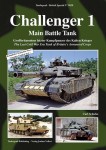
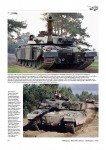
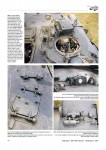
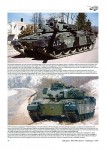
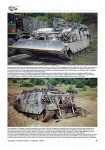
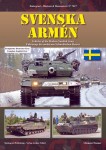
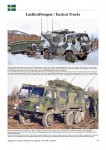
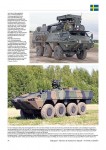
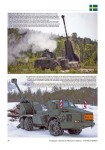
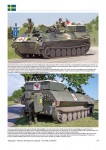
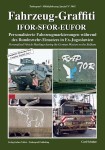

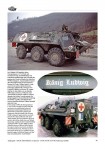
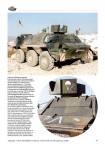
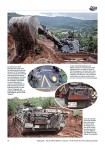
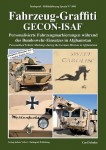
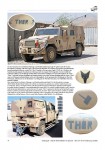
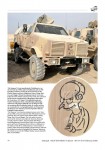
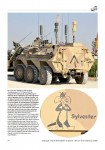
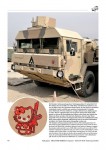
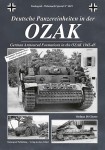
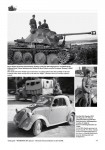
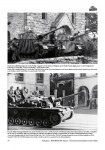
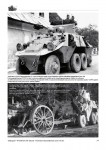
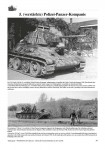
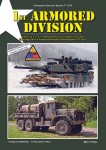
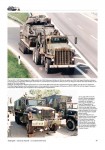
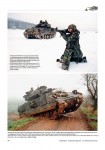
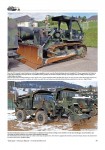
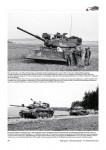
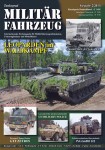

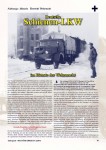

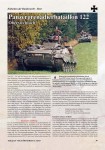
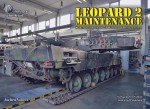
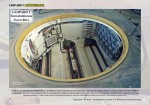
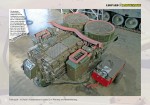
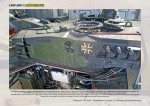
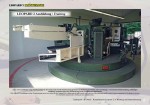



Comments